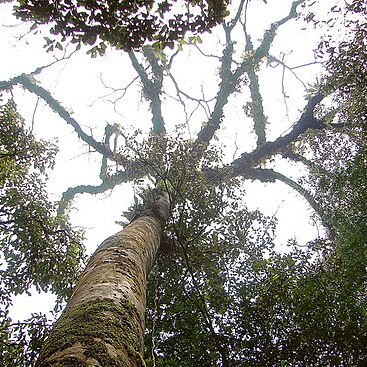Trees. Stipules foliaceous, free, rarely connate at the lower half. Leaves alternate, pari-pinnate, 2-10-jugate. Leaflets opposite, coriaceous, often with scattered pellucid dots, shortly petiolulate; midrib usually slightly grooved above, prominent below, often ending in a ± developed, terminal gland; nerves many, usually more than 20 per side, obscure or faint above, visible or distinct beneath, leaving the midrib at an angle of about 60° or more and forming a thickened nerve close to the margin; veins finely, very closely reticulate (by examining, e.g. with a hand-lens) on both surfaces, petioled. Inflorescences solitary or gregarious, paniculate or racemose; bracts and bracteoles small, often caducous or sometimes present at anthesis. Flowers bisexual, zygomorphic, shortly pedicelled or subsessile. Hypanthium very short. Calyx lobes 4, narrowly imbricate, outer surface often with spiny outgrowths. Petals 1, usually fleshy, rudimentary ones often wanting. Stamens 10 (9 + 1), uppermost one free and reduced to a short staminode, the remaining 9 shortly and obliquely united at the base and sheath-like, the united part often hairy on both surfaces; 2 upper ones fertile with elongate filaments and ovoid or oblong, longitudinally dehiscing, dorsifixed anthers; 7 lower ones with shorter filaments and with or without small, imperfect anthers. Ovary with a short, free stipe, 2-5-(or more-)ovuled; style filiform, often recurvate; stigma small. Pods flat, rounded ovate or elliptic, often spiny, rarely unarmed, dehiscent, woody, 2-valved. Seeds few, black, shining, with a large fleshy aril at the base; cotyledons split; endosperm absent.
More
Trees. Leaves abruptly pinnate; stipules leaflike; leaflets 2-10 pairs, leathery. Flowers bisexual, in terminal panicles or racemes; bracts and bracteoles caducous, ovate. Calyx tube very short, with disk at base; lobes 4, valvate or margin narrowly imbricate, ± with soft bristles. Petal 1, rarely 2. Stamens 10: 9 shortly united into an oblique tube, upper stamen free and reduced to an antherless, slightly short staminode; anthers oblong, dorsifixed, opening lengthwise. Ovary 2-5-ovuled, shortly stalked; style filiform, circinate; stigma small. Legume compressed, usually orbicular or oblong, ± oblique, large, dehiscent, often shortly prickly on surface of valves, rarely without prickles. Seeds 1 or 2, black, shiny, with a large fleshy aril at base.
Unarmed trees. Leaves alternate, pinnate; stipules leafy, free; leaflets opposite. Inflorescence solitary or several together, paniculate or racemose. Flowers bisexual; bracts small, commonly caducous. Sepals 4 on short receptacle. Petal 1. Stamens 10, shortly united; uppermost free, sterile; next 2 fertile; remainder sterile; anthers dorsifixed. Pistil with a short stipe; style filiform. Pod flat, ovate or elliptic, commonly with prickles, woody, dehiscent. Seeds flat.
UsesPlants of some species produce strong and durable wood of excellent quality, resin or wood-oil, medicine, tannin, etc. See Burkill Diet. Econ. Prod. Malay Penins. 1935 2031-2034 K. Heyne Nutt. Pl. Indon. 3 1950 727-730 Sambas et al. Soerianegara & Lemmens Pl. Res. SE Asia (PROSEA Handb.) 5 (1), Major commercial timbers 1993 434-442

